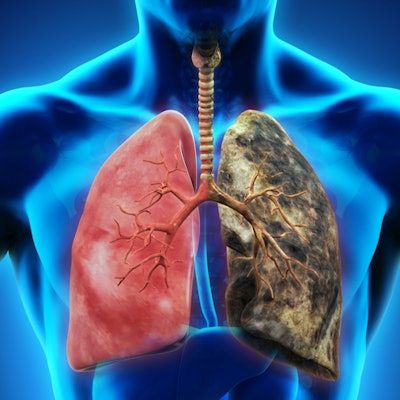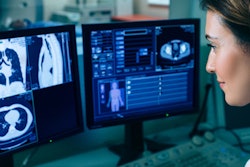
Using individual risk-based criteria to determine eligibility for CT lung cancer screening may avert more deaths from cancer than using current U.S. Preventive Services Task Force (USPSTF) guidelines, according to research published online January 1 in the Annals of Internal Medicine.
The USPSTF recommends annual CT lung cancer screening for people between the ages of 55 and 80 years who smoke or quit smoking within the past 15 years and have a cigarette smoking history of at least 30 pack years -- nearly matching the criteria for the National Lung Screening Trial (NLST).
Though lung cancer screening with low-dose CT has been associated with reducing cancer deaths, the number of people in the U.S. meeting the USPSTF criteria sharply decreased from 2010 to 2015. The prevalence and intensity of smoking continues to decrease among young people in the 2015 population, which suggests that the number of people who have ever smoked and are eligible for lung cancer screening based on the USPSTF criteria will likely continue to fall.
To expand CT lung cancer screening to cover high-risk smokers who do not fit the USPSTF criteria, researchers from the National Cancer Institute led by Li Cheung, PhD, evaluated the benefits of offering screening based on individual risk factors accounting for demographic, clinical, and smoking characteristics.
They examined data of 5,460 smokers who participated in the National Health Interview Survey in 2005, 5,155 who participated in 2010, and 6,971 who participated in 2015. Applying the Lung Cancer Risk Assessment Tool -- a risk prediction model developed by Katki et al -- they categorized individuals based on a 1.5%, 2%, or 2.5% likelihood of developing lung cancer within five years.
The researchers further calculated that using risk-based criteria covering smokers with a five-year lung cancer risk of 2.5% would have prevented 2,617 more lung cancer deaths between 2005 and 2010 and 5,115 more between 2010 and 2015 than using the USPSTF criteria did. The data were statistically significant (p < 0.001) for both periods.
The percentage of lung cancer deaths prevented by screening with the USPSTF criteria decreased by 6.4% from 2010 to 2015. Risk-based criteria would have cut this reduction in half. This decrease in the number of people who have ever smoked (1.5 million) eligible for screening based on the USPSTF criteria from 2010 to 2015 coincided with an increase of 1.3 million smokers with a 20- to 29-pack-year history who otherwise met the criteria, the authors noted.
"The gap in screening effectiveness between risk-based and USPSTF screening criteria may continue to increase in the future," they wrote (Ann Intern Med, January 1, 2018). "To better capture high-risk smokers and prevent premature deaths from lung cancer, eligibility for lung cancer screening should be based on reaching a cost-effective risk threshold that balances CT screening benefits and harms by using a lung cancer risk tool validated in the U.S. population."
In a separate, related study, researchers from Tufts Medical Center confirmed the finding that using risk-based criteria improves the efficiency of lung cancer screening in terms of reducing mortality (Ann Intern Med, January 1, 2018). However, their cost analysis also revealed that risk-based screening offers only minor gains in terms of quality-adjusted life years (QALYs) and cost-effectiveness.
"Higher-risk patients are more costly to screen and have a lower life expectancy if they survive lung cancer," lead author Dr. Vaibhav Kumar wrote in this analysis. "Thus, applying such a risk model is unlikely to lead to substantial improvement in the cost-effectiveness of CT screening in terms of QALYs gained per unit cost."
Although the analyses from both of these studies corroborate that risk models might increase the efficiency of CT lung cancer screening in the short-term per person screened, the overarching concern of low screening rates seemingly eclipses the findings from a large-scale perspective, wrote Drs. Angela Green and Peter Bach from Memorial Sloan Kettering Cancer Center in an accompanying editorial.
The annual rate of lung cancer screening in the U.S. is approximately 74,000 out of an eligible population of nearly 7 million, which equates to a rate of less than 2%, according to the editorial.
"Although risk-based identification of persons who should be offered screening is empirically superior to using the current cutoffs, the more pressing concern is why people, regardless of how their eligibility is defined, are not receiving the test," they wrote.




















